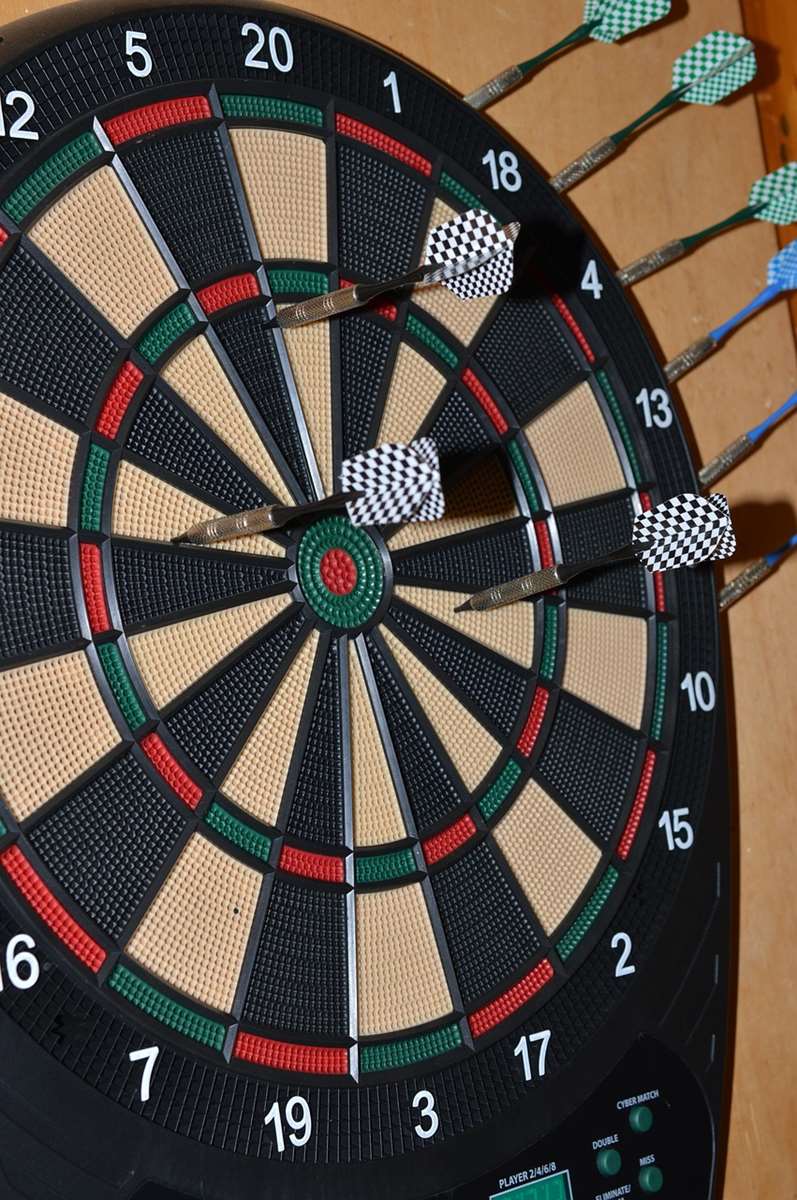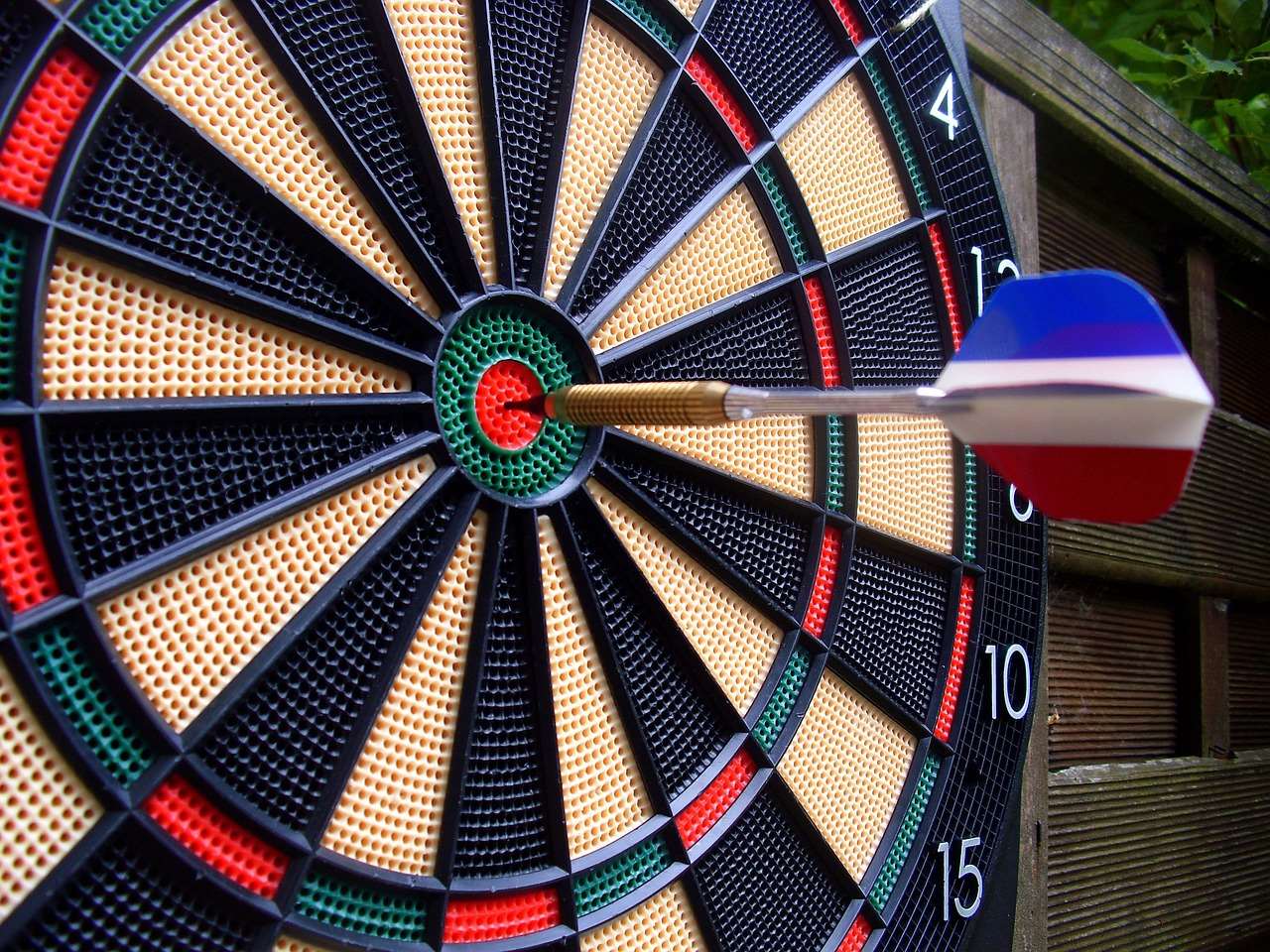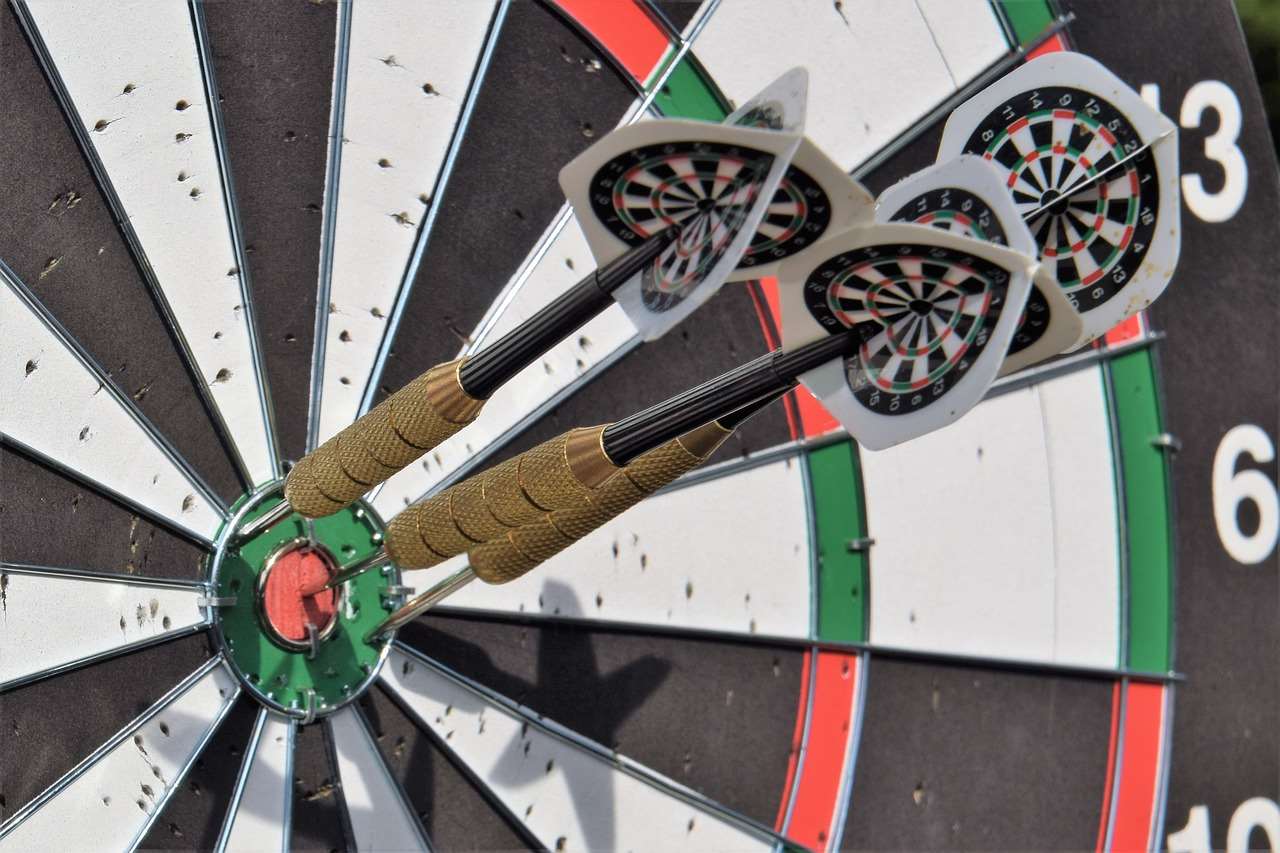New to darts and feeling lost in a sea of unfamiliar terms? This **dart game terminology glossary** will arm you with the knowledge you need to understand the game, from basic scoring to advanced techniques. We’ll cover everything from the oche to a Shanghai, helping you confidently navigate the world of darts.
⚠️ Still Using Pen & Paper (or a Chalkboard)?! ⚠️
Step into the future! The Dart Counter App handles all the scoring, suggests checkouts, and tracks your stats automatically. It's easier than you think!
Try the Smart Dart Counter App FREE!Ready for an upgrade? Click above!
Understanding Basic Dart Game Terminology
Let’s start with the fundamental terms you’ll encounter frequently in darts. Knowing these will provide a solid base for understanding more complex concepts and strategies.
- Oche (pronounced “ockey”): The throwing line or distance a player must stand behind when throwing darts. Its regulation distance varies depending on the darts organization and the specific game being played.
- Dartboard: The circular board made of sisal fibers (bristle) or cork divided into sections, each representing a different point value.
- Flights: The fins attached to the back of the dart, providing stability and aerodynamics during flight. These come in various shapes, sizes, and materials.
- Shaft: The part of the dart connecting the barrel to the flight. Shafts also come in different lengths and materials affecting the dart’s balance and trajectory.
- Barrel: The main body of the dart, usually made of brass, tungsten, or a combination of metals. The barrel’s weight and grip are crucial for a player’s throwing style.
- Point: The sharp metal tip of the dart that penetrates the dartboard.
Understanding the **dartboard layout** is also essential. The board is divided into:
- Single Segments: The large areas between the doubles and trebles.
- Double Ring: The outer ring of the dartboard, scoring double the value of the corresponding number.
- Treble Ring: The inner ring, scoring triple the value of the corresponding number.
- Bullseye: The center of the board, usually worth 50 points. Often divided into an outer bull (25 points) and an inner bull (50 points).

Scoring Terminology: From Basics to Advanced
Now, let’s delve into the language of scoring. This section of our **dart game terminology glossary** will cover all the essential terms related to how points are earned and tracked.
- Score: The total number of points accumulated by a player or team during a game.
- Checkout: The act of ending a game by reducing your score to exactly zero, usually by hitting a double.
- Bust: Exceeding the required score to checkout, resulting in no score for that throw and returning to the previous score. Mastering checkout strategies involves avoiding busts.
- Ton: Scoring 100 points or more with three darts.
- Ton 40: Scoring 140 points with three darts.
- Ton 80: The highest possible score with three darts – three treble 20s. A **Ton 80** is a celebrated achievement.
Understanding the nuances of **scoring darts** is key to improving your game. Strategies often revolve around setting up advantageous checkout opportunities and consistently scoring high.
Checkout Strategies
Successfully checking out is often the most challenging part of the game. Here are some common strategies and related terms:
- Double Out: A requirement in some games that the final dart thrown to win must land in the double ring.
- Setting Up: Planning your throws to leave a manageable checkout score, ideally a double.
- Nine-Dart Finish: The theoretical perfect game in 501, finishing the game in just nine darts. This is exceptionally rare and a testament to skill and precision.
Remember that Simplified 501 game rules for novice players often focus on easier checkout methods to help beginners learn.

Game-Specific Terminology
Different dart games have their own unique terms and rules. This section of our **dart game terminology glossary** highlights some of the most common.
501
- Starting Score: 501 is the standard starting score for each player.
- Double In/Out: Some variations require a double to start scoring (double in) or to finish (double out).
Around the Clock (or Killer)
- Around the Clock: Hitting each number on the board in sequence, typically from 1 to 20.
- Killer: A game where players eliminate each other by hitting their designated number a certain number of times.
Cricket
- Cricket Numbers: Specific numbers (usually 20, 19, 18, 17, 16, 15, and the bullseye) that players must “close” by hitting them three times.
- Marking: Hitting a cricket number.
- Closing: Hitting a cricket number three times, making it available for scoring only by the player who closed it.
- Cutting Throat: When a player closes a number, they can score on it if their opponent hasn’t closed it yet.
Exploring Fun dart game variations with modified rules can introduce you to even more specialized terms and gameplay styles.

Advanced Darts Lingo: Strategy and Technique
Beyond the basics, darts has a lexicon of terms describing advanced strategies, throwing techniques, and even a bit of colorful slang. This section of the **dart game terminology glossary** will introduce you to some of these.
- Grouping: The ability to throw darts consistently close together. Tight grouping indicates accuracy.
- Blocking: Intentionally throwing a dart to obstruct a target on the board, either defensively or strategically.
- Robin Hood: When a dart lands directly in the shaft of another dart already in the board. It usually doesn’t score but is an impressive (and expensive!) feat.
- Shanghai: Hitting a single, double, and treble of the same number in one turn.
- Walk-On Music: The song a professional darts player chooses to play as they walk onto the stage.
Consider Basic Darts Fundamentals for Beginners to improve your basic technique and develop the skills needed to understand and utilize these advanced concepts. This provides a foundation for more complex strategies.

Common Slang and Phrases in the Darting World
Darts, like any sport, has its own collection of slang terms and phrases. Knowing these adds to the fun and helps you understand the culture of the game.
- Bed and Breakfast: Scoring 26 (single 20, single 5, single 1).
- Mad House: The double one (because it can drive you mad trying to hit it to checkout).
- Tops: The double 20.
- One Dartitis: A mental block that prevents a player from releasing the dart smoothly.
Remember, understanding the rules is only half the battle. Knowing the language of the game helps you communicate with other players and appreciate the nuances of the sport. Even adapting darts rules for beginners won’t help if you don’t understand the terminology!

Conclusion
This **dart game terminology glossary** has provided a comprehensive overview of the language used in darts, covering everything from basic equipment and scoring to advanced strategies and slang. By understanding these terms, you’ll be better equipped to learn the game, communicate with other players, and appreciate the rich culture of darts. Now that you’re armed with this knowledge, grab some darts, find a board, and start practicing! Ready to elevate your game? Visit our website for more in-depth guides, tips, and equipment reviews!
Hi, I’m Dieter, and I created Dartcounter (Dartcounterapp.com). My motivation wasn’t being a darts expert – quite the opposite! When I first started playing, I loved the game but found keeping accurate scores and tracking stats difficult and distracting.
I figured I couldn’t be the only one struggling with this. So, I decided to build a solution: an easy-to-use application that everyone, no matter their experience level, could use to manage scoring effortlessly.
My goal for Dartcounter was simple: let the app handle the numbers – the scoring, the averages, the stats, even checkout suggestions – so players could focus purely on their throw and enjoying the game. It began as a way to solve my own beginner’s problem, and I’m thrilled it has grown into a helpful tool for the wider darts community.